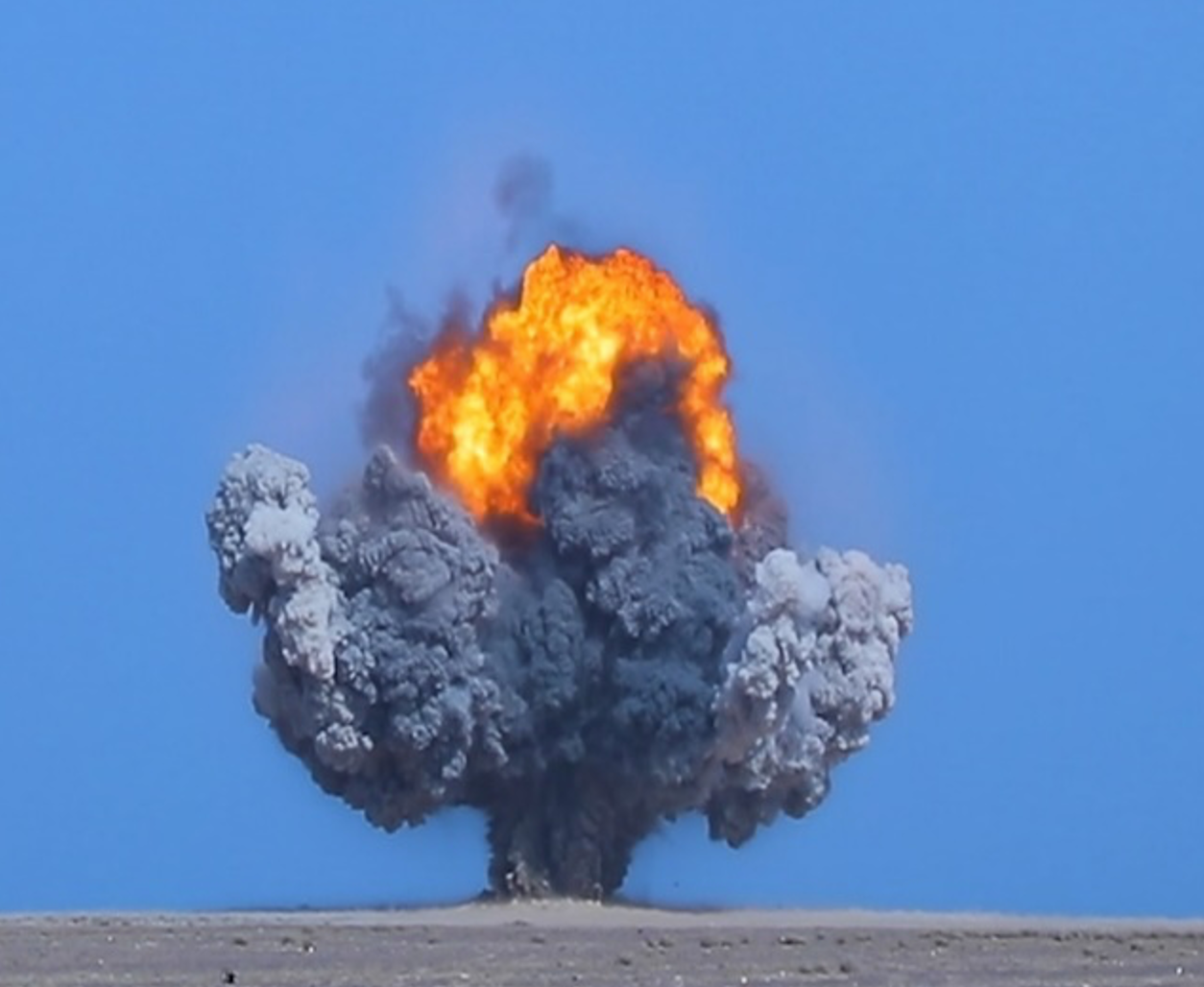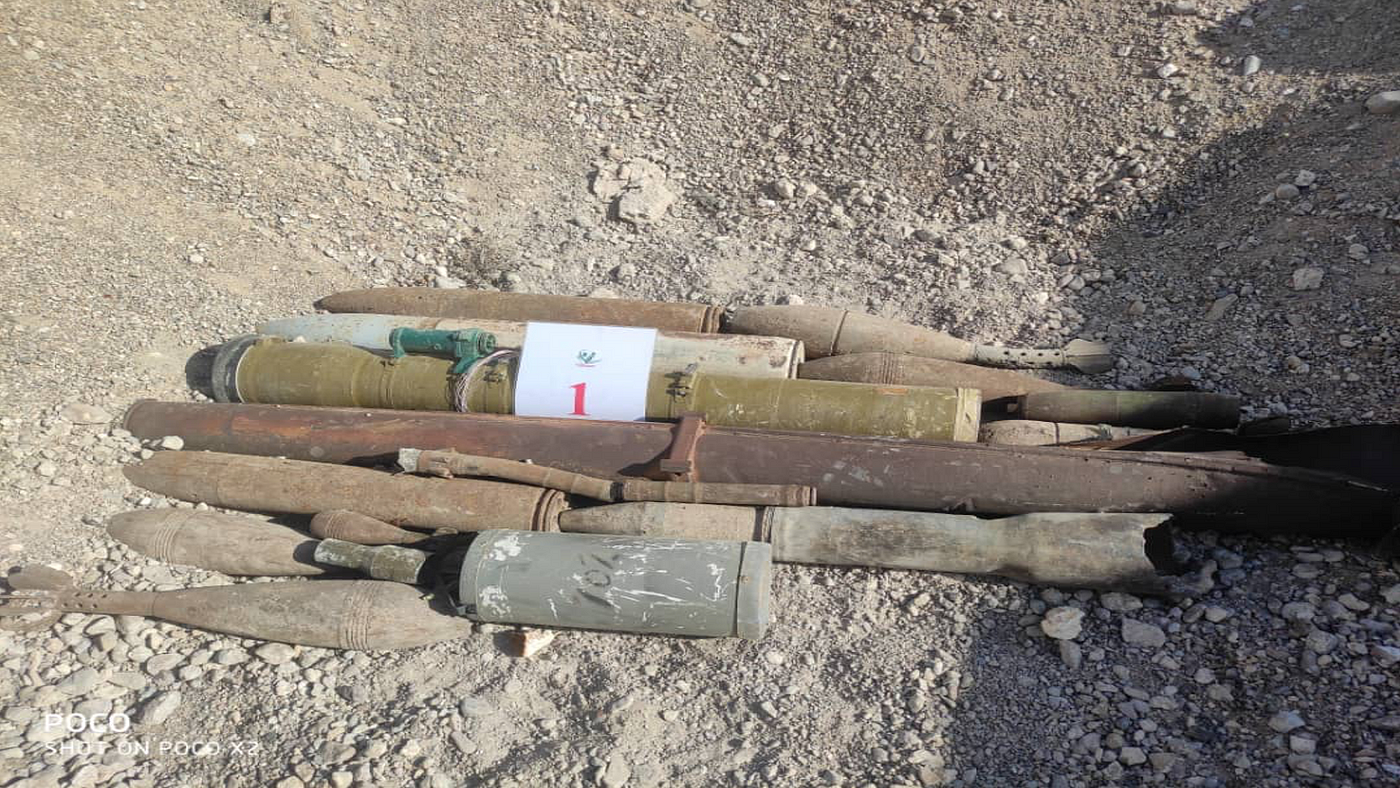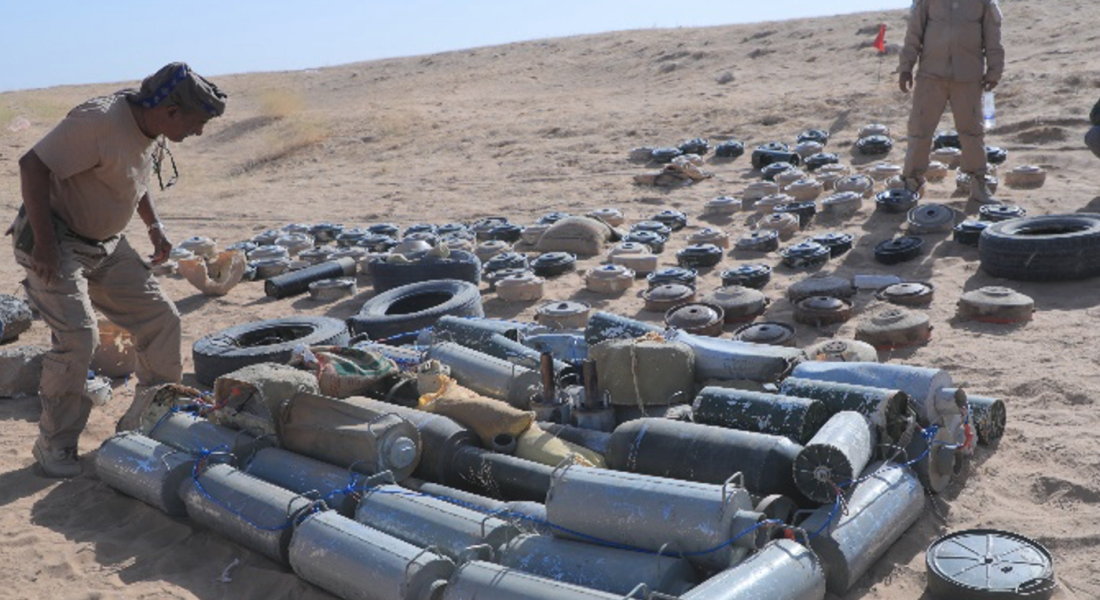As the temperature rises to 30 degrees in the West Coast of Yemen, deminers are keeping a wary eye on the ground around them.
They are looking for landmines and improvised explosive devices, or IEDs.
Landmines and IEDs have been found in newly liberated areas situated very close to the Houthi frontlines, where they have been planted on previously verified areas — by either Houthi operatives or local Houthi sympathisers.
Unexploded ordnance, which included bullets, shells and grenades, for example, are typically left behind after fierce combats before the areas are liberated.
But while the number of landmines and IEDs cleared is reaching staggering heights (140,096 so far since humanitarian mine clearance programme Masam started in mid-2018), UXO, still remain the largest number of Explosive Remnants of War (ERW) found in Yemen (203,715 over the same period, to date).
In alignment with the global mine action sector, Project Masam’s responsibilities include the clearance, removal or destruction of landmines stockpile and ERW.
By destroying the explosive items, Project Masam ensures they can no longer function as designed or be repurposed — this effectively protects civilian populations and helps to eradicate these deadly weapons.
“The National Demining Program, in partnership with the Saudi project Masam, carries out operations to destroy a number of mines and other war remnants, such as projectiles, detonators and the like,” Deputy Director of the Executive Center for Mine Action (YEMAC) in Marib, Muntather Al-Radfani said from Ataq Directorate, in Shabwah Governorate.

In one instance, Ali Hadi Rashid, Leader of Team 27, told Project Masam his team had been commissioned to survey an area near Al-Omari school in the Dhubab area in the Taiz Governorate of south-western Yemen following local reports.
“We have been working in this area, which is just south of Al-Omari school, based on information from the students about the presence of shells and the explosion of one of the landmines planted in this area,” Rashid said.
The team discovered eight shells and a number of warheads and other fuses.
“A number of projectiles and dangerous explosives were found, and they were cleared and handed over to the UXO and ERW disposal team.”
These safe detonation operations are executed by well trained personnel and are always executed in the presence of a demolition expert who monitors the operation from off-loading to counting of the physical demolition.
Importance of UXO clearance
The reason why it is crucial to remove these UXO is two-fold. Firstly, their clearance prevents civilians from coming into contact with these explosive hazards.
Secondly, UXO could fall in the wrong hands and if left abandoned, can be repurposed as IEDs against the Yemeni population.
“Removal and destruction [of UXO] is very important, as any large “calibre” munition such as artillery rounds can be used as IEDs,” said Gus Maartens, Masam’s Project Manager.

“It is easy to “construct” [IEDs] as the UXO already has an explosive content with the casing acting as shrapnel, and all they need to add is the initiation device, and as can be seen, some of the UXO has a very large explosive content, and will kill any person or persons activating the device.”
Highlighting how these devices can be used in all areas and are not restricted to specific areas, the Project Manager added: “It is a very common occurrence that IEDs of this nature are found, and that is the reason we need to clear any possible UXO found.”
Danger of repurposed UXO
So, how are UXO repurposed?
Typically, UXO can be used as the main charge in almost any type of IED, for example connected to a pressure switch under the ground; connected to a receiver in a roadside device or even connected to a timer and left in a bag at market place.
A Masam IED Threat Officer, who asked not to be named for security reasons, was able to explain: “[UXO] may be used as an IEDs explosive main-charge or part of a larger main-charge (for example within a vehicle-borne IED). Typically, the UXO will have its fuse removed and replaced with a booster charge of plastic explosive and detonating cord.”
The demining teams have discovered such IEDs in the past.

In another case, teams found an old 150kg air-delivered munition from old Yemeni military arsenal that had been adapted to be used as IED by inserting a detonating cord in the fuse well of the bomb.
“Typically, an electrical detonator will then be connected to the detonating cord. This device can either be remotely detonated, or a pressure plate connected to create a victim-activated explosive item,” Maartens added.
Huge IEDs uptake in Yemen
This occurrence is not unique to Yemen. Indeed, Maartens and the IED Threat Officer said repurposed UXO has been widely used by armed groups around the world.
“Militants in Iraq, Afghanistan, Libya, Somalia, Mali and other conflict areas regularly utilise UXO in their IEDs,” the IED Threat Officer said, adding that the mine action experts have also encountered similar items in Lebanon, Angola and Sudan.
Fortunately, so far, it remains rare for Masam teams to discover IEDs containing UXO main-charges.
“This is because Masam is predominantly clearing Houthi battle areas or minefields and the Houthis do not tend to incorporate UXO, preferring to utilise their own improvised main-charges that are typically filled with homemade explosives or recast TNT,” the IED Threat Officer said.
“There are the occasional exceptions, where Houthis use items of UXO, and there are also areas where the teams encounter IEDs from other terrorist organisations, who are more likely to employ UXO main-charges.”

There has, however, been huge uptake in IEDs — including rockmines which are IEDs made to look like small rocks — used against civilian populations, deminers, and on roads used by civilians and deminers alike.
Managing Director and Programme Manager for Project Masam Ousama Algosaibi, who has been working in the mine action sector for over 30 years, said that during his 20 years of service in South Lebanon, the number of IEDs (including rockmines) cleared was 384. In Yemen, 7,375 have been found in four years by Masam’s teams operating in Yemen’s West Coast and around the central province of Marib.
“Nowhere in the world have I seen so many IEDs,” Algosaibi said, adding, “and that is only what Project Masam has found.”
Since the start of its operations, the main objectives of Masam’s demining teams have been to clear liberated areas as soon as possible, to ensure the safety of civilians in specific areas, which include villages, school, mosques, healthcare facilities, pastures, water access points and roads previously occupied by the Houthis.
Article first published by Medium.

